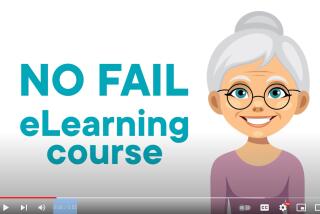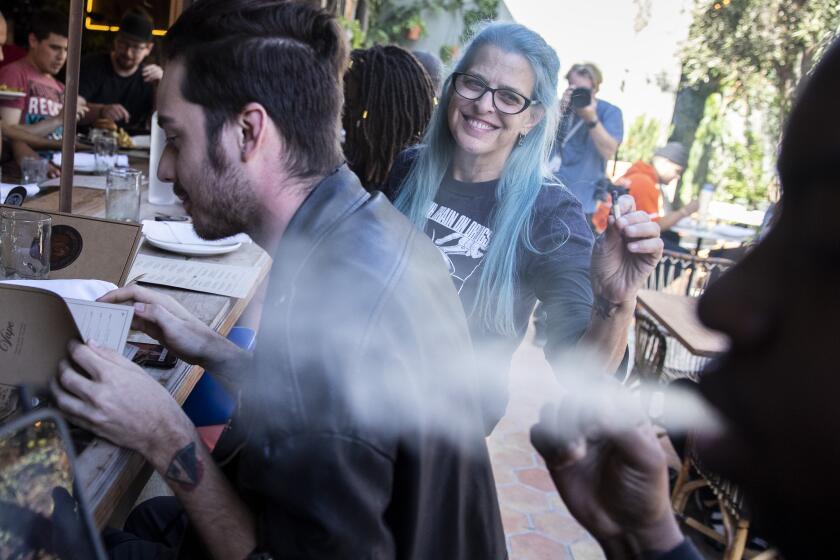Road to Secession Long and Full of Turns
Could the Valley really break off from the rest of Los Angeles?
Yes, it could happen, but experts warn that the process is quite complicated, fraught with political peril at every turn and could take years.
When a bill to ease the secession process won surprise approval in the state Assembly this month, the long-simmering issue suddenly moved to the front burner. The measure, by Assemblywoman Paula Boland (R-Granada Hills), would take away the Los Angeles City Council’s power to veto secession plans. If made law, that would leave the issue for Valley voters alone to decide.
The discussion has caught the fancy of homeowners associations and business groups, who complain that the city is too big and the San Fernando Valley “isn’t getting its share” of city services. Translating that gripe into action will require a considerable degree of effort.
The bill’s next hurdle is the state Senate, where opponents have vowed to defeat it. Yet even if the measure wins approval there, and if Gov. Pete Wilson agrees to sign it--the fight would be far from over.
Here are some questions, and answers, about the process:
*
Q: If the Boland bill passes, what happens next?
A: Probably not much right away. In fact, passage of the bill would be the beginning of a very long process. Boland’s bill includes language that would require the Valley to incorporate at the same time that it secedes from Los Angeles, triggering a lengthy procedure required by state law.
After passage, secession supporters would need the signatures of 20% of the Valley’s registered voters. That would get the ball rolling with the Local Agency Formation Commission, or LAFCO, the independent agency that oversees incorporations, annexations and secessions.
*
Q: What exactly is LAFCO?
A: Every county in California has a LAFCO to decide boundaries and oversee the incorporations of new cities. Because borders and boundaries can be contentious issues, the commissions are designed to be as autonomous as possible. LAFCO has the power to veto any Valley plans to secede and incorporate as a city. But before LAFCO could consider the secession request, several issues would have to be resolved.
*
Q: Such as?
A: Such as the ability of the new city to support itself financially. A series of studies would be conducted to determine whether a Valley city would earn enough revenue from such sources as property taxes and business license fees to cover the costs of cityhood--police and fire protection, road maintenance and trash pickup, among others. Only communities that pass this fiscal test are allowed to incorporate.
But because a Valley incorporation would also involve secession, a second test must be applied. For LAFCO to approve the secession, the panel must be assured that such a move would have no net financial effect on the Los Angeles treasury.
In other words, the amount of money Los Angeles would lose in Valley taxes and fees could be no larger than the amount it saves by not providing municipal services. If that were not the case, the Valley might be required to pay the difference to Los Angeles every year to offset the loss.
*
Q: If the Valley passes these tests, then secession could take place?
A: Yes and no. The process is more political than it seems. Numbers on both sides can be manipulated in a thousand different ways. As Mark Twain said, statistics fall somewhere after lies and damn lies. So each side is likely to present numbers that help its case, and the LAFCO board will decide which numbers to believe--or come up with its own.
Once all these issues are settled, LAFCO votes on whether to permit the secession. After that, the decision would most likely move to Valley voters.
*
Q: Is there an organization or committee working for secession?
A: Not yet. But count on one or more to pop up if the Boland bill passes.
*
Q: How long would all of this take?
A: Hard to tell. The incorporation of cities such as Santa Clarita and Calabasas took decades, but that was mainly because of opposition from developers and elected officials who did not want these unincorporated county areas turned into cities.
The process could move quickly if key political leaders on the City Council, the Board of Supervisors and the Legislature lend their support to the movement. Count on the courts jumping in at least once to keep the process moving.
*
Q: Who would get to vote on secession?
A: Right now, it looks as if just residents and property owners in the Valley would be eligible to vote. Some members of the City Council and academic observers, though, think the issue should be decided by voters citywide.
They argue that a Valley secession would certainly have an impact on the rest of the city--therefore, all of its residents should have a say. Otherwise, it’s possible that the decision to break up Los Angeles would be made by a tiny minority of the city’s eligible voters.
*
Q: How?
A: Assume that the Valley has about 30% of the city’s voters. In recent years, only about 20% of those voters have turned out for municipal elections. If that figure held for the secession election, then only about 6% of the city’s voters would cast ballots. Of those, a simple majority would determine the secession vote.
*
Q: Are there boundaries for a Valley city?
A: Not yet. But informal discussions among proponents favor breaking off the Valley along historical boundaries. For instance, the southern boundary being proposed now is Mulholland Drive. The other boundaries would follow current city borders.
None of this is final, though. Even after supporters draw up a map, LAFCO board members can tinker with it and decide the ultimate boundaries. Say a particular neighborhood wants to be excluded from the new city. Residents of that neighborhood could appeal to the commission, which can redraw the boundaries.
Keep in mind, boundaries can have a significant economic impact. Although it’s unlikely, suppose that the southern boundary were drawn at the Ventura Freeway instead of Mulholland, thus excluding tax-rich shops and businesses along Ventura Boulevard.
That could knock fiscal projections for a loop.
*
Q: How would the city’s assets be divided if the city broke up?
A: This is the million-dollar question, and the most difficult to resolve. During its more than half-century as part of the city of Los Angeles, the Valley has accrued considerable benefits, from water and sewer lines to streets and sidewalks.
Because no city the size of Los Angeles has ever split apart, the process of dividing up assets is uncharted territory. Some experts believe the Valley would simply assume roughly one-third of the city’s assets and obligations. Others say the process will be more like a nasty divorce, with arguments over the most insignificant pieces of property.
How to deal with city assets financed in part by Valley dollars but located elsewhere, is particularly problematic. No one is quite sure how to deal with facilities such as Los Angeles International Airport or the harbor, which generate significant revenues.
*
Q: Who gets to decide whether to call an election on secession?
A: LAFCO determines whether an election must be held. How? By approving the application for incorporation. Once that happens, state law requires a protest hearing to gauge opposition to the incorporation. If more than 25% of Valley residents or property owners protest, a vote must be held. If more than 50% protest, incorporation cannot proceed in any case.
As a practical matter, a vote is almost certain.
*
Q: Who are the members of LAFCO?
A: LAFCO draws its commissioners from a number of public entities around the county. The idea is to create a balance of power and interests so that no single bloc can run roughshod over the others.
Two of the commission’s nine members are Los Angeles County supervisors--Yvonne Brathwaite Burke (2nd District) and Deane Dana (4th District). Three are members of city councils--Hal Bernson from Los Angeles, Tom Jackson from Huntington Park and Jack Hastings from La Canada Flintridge.
Two other members represent special districts and two are private citizens. One of the public members is selected by the Board of Supervisors and the other is chosen by the rest of the LAFCO board.
LAFCO’s executive officer is Larry J. Calemine, a West Hills development consultant.
More to Read
Sign up for Essential California
The most important California stories and recommendations in your inbox every morning.
You may occasionally receive promotional content from the Los Angeles Times.










